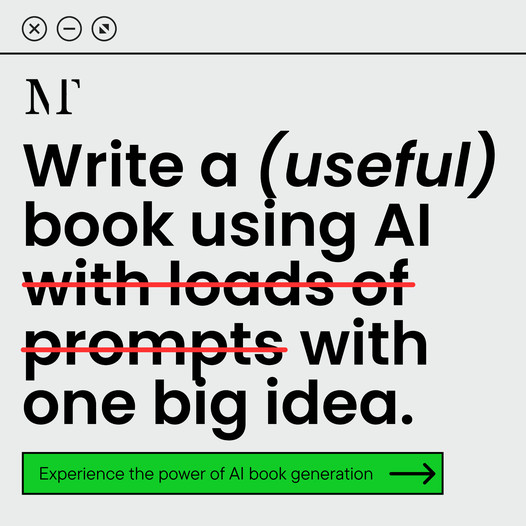Crafting Compelling Dialogue
Importance of Dialogue in Writing
Ever notice how dialogue can make a story pop or flop? Getting those conversations right in your writing isn’t just fluff—it’s how you breathe life into your characters and the adventures they’re on. Dialogue doesn’t just push the plot along; it’s the gritty tool that unveils who your characters are and makes readers feel all the feels. When you nail down writing killer dialogue, your whole story can stand out and connect with readers on a real level.
Why is dialogue such a big deal? Let’s break it down:
| Role of Dialogue | Explanation |
|---|---|
| Moves the Story Along | Chats between characters can push the narrative forward, building up tension and momentum. |
| Shows Who’s Who | The way folks talk shows their personality, where they hail from, and what makes them tick. |
| Stirs the Pot | Dialogue can fire up or stir up troubles, keeping things spicy in your story. |
| Pulls at the Heartstrings | Emotion-packed dialogue reaches into readers’ hearts, tugging at their emotions. |
Benefits of Mastering Dialogue Crafting
Getting a grip on crafting conversation is like rocket fuel for your writing. As you polish this craft, you’ll start reaping perks that boost your overall storytelling game.
| Benefits of Mastering Dialogue | Explanation |
|---|---|
| Keeps Readers Hooked | Juicy dialogue keeps readers glued to the page, eager to see what happens next. |
| Makes it Feel Real | Talk that sounds natural makes your tale feel authentic and pulls readers in. |
| Builds Character Bonds | Cool exchanges show off relationships, making them richer and more layered. |
| Boosts Your Writing Game | Practicing dialogue sharpens your writing skills, from pacing to character polish. |
Locking in these aspects can teach you how to write compelling dialogue that pulls in your audience, making your story a page-turner. Got an itch to up your writing game? Check out writing tips to boost skills or dive into some creative writing drills.
Understanding Dialogue
Want to make conversations in your storytelling pop off the page? You gotta get the hang of two main things: how folks actually yammer away and giving each of your characters a unique voice. Nailing these can turn meh dialogue into memorable chats.
Natural Conversation Flow
Have you ever eavesdropped on a chat and noticed how folks bounce around topics or cut each other off? That’s what real chat sounds like. Here’s how to sprinkle that magic in your writing:
| Element | What It’s About |
|---|---|
| Interruptions | Sometimes, people love to talk over others or trim off sentences. |
| Pauses and Hesitations | Shush those thoughts with ellipses (…) or dashes (—) for the full effect. |
| Colloquialisms | Throw in some slang or casual talk to capture where your character’s from. |
| Nonverbal Cues | Jazz it up with gestures or eye rolls to show what’s left unsaid. |
Using these tricks will make your dialogue hit home for your audience. Need more tips to make those lines swoon-worthy? Check our piece on writing killer dialogue.
Character Voice Development
Just like how none of your friends sound the same, neither should your characters. It’s all about creating voices that tell you who they are. Here’s the lowdown:
| Strategy | What to Focus On |
|---|---|
| Background Influence | How someone grew up can change the way they talk—think slang, fancy words, or short chats. |
| Emotional Tone | Change their speech vibe with what they’re feeling. Got serious stuff? Maybe keep it fancy; feeling chill, then loosen up. |
| Consistency | Keep the vibe of how they talk steady through your story. No big surprises unless they mean to change. |
Crafting these distinct voices makes your story feel alive. Curious about how to shape the rest of your characters’ lives? Dive into our guide on nailing character development.
Get these bits down, and your dialogue will not just be read—it’ll be felt. Time to spin tales that leave a lasting impression!
 What Poetry Feels Like
What Poetry Feels LikeTechniques for Writing Compelling Dialogue
Getting your readers hooked often comes down to some good ol’ dialogue. With a few tricks, you can make those conversations in your story feel real and pack a punch.
Show, Don’t Tell
Want to convey what your characters are feeling? Let them do the heavy lifting. Show emotions through what they say and do, instead of spelling it out.
Think about swapping “She was mad” for something like:
“I can’t believe you did that! How could you not see this coming?”
Suddenly, your reader’s in the thick of it, feeling her frustration. For more juicy tips, check out our fiction writing guide.
Use of Subtext and Implied Meaning
Subtext is where the unsaid stuff lives. It adds depth and intrigue, letting readers see what’s bubbling beneath the surface.
Picture this: two people talking about dinner, but really it’s a roundabout way of airing their tensions:
“Sure, Italian sounds great. But, do we really have to go out again? I thought we were saving money.”
Here, what isn’t said speaks volumes. This kind of back-and-forth feels raw and real, letting readers pick up on the signals. Dive into more secrets with our piece on character development.
Pacing and Rhythm
Getting the pace of your dialogue right is like catching a good wave. Conversations have a rhythm — people interrupt, pause, speed up or slow down. Shake things up to build suspense or relax the scene.
Check out this quick-fire spat:
“I didn’t—”
“You did! Don’t lie!”
“I swear, it wasn’t me!”
Meanwhile, drawn-out chats can show contemplation or gravity. Mixing up your pacing keeps the reader on their toes and stirs up emotions. For more on polishing your writing, take a gander at our article on improving writing skills.
Throw these techniques into your storytelling mix, and you’ll be a dialogue pro in no time. Your words will stick with readers long after they’ve turned the page.
Bringing Dialogue to Life
Creating lively and engaging dialogue is essential to captivating your audience. You can add layers of emotion and authenticity while crafting interactions that sound real.
Adding Emotion and Depth
Give your dialogue some heart by infusing it with emotion. This conveys what your characters are feeling, making it easy for readers to connect. Paint a picture with words and action tags to enhance the emotional undertones.
Techniques for Adding Emotion
| Technique | Description |
|---|---|
| Body Language | Show what characters are feeling with physical reactions like clenched fists or shaky voices. |
| Tone | The way things are said can change everything. Think about how sarcasm, enthusiasm, or fear color the characters’ words. |
| Pauses | Use ellipses or make room for the occasional pause. It lets emotions linger in the air during conversations. |
Creating Believable Interactions
To pull readers into your story, the chatter among characters must ring true. These guys should talk just like real folks. Listen to people around you to nail those conversational quirks.
Elements for Realistic Dialogue
| Element | Importance |
|---|---|
| Distinct Voices | Each character needs their own way of talking, reflecting who they are and where they come from. Stick to their unique style for stronger identities. |
| Natural Flow | Aim for dialogues that sound like everyday chatter. Steer clear of long-winded speeches or robotic sentences. Don’t mind some interruptions or voices talking over each other. |
| Cultural Sprinkles | Add a dash of culture—slang and idioms spice things up and pull readers into your world. |
By beefing up emotional depth and creating believable exchanges, your characters’ conversations become more real and engaging, drawing readers closer. You might want to check more tips for writing realistic dialogue.
Common Dialogue Mistakes to Avoid
When you’re writing dialogue, it’s key to dodge slip-ups that might drag your writing down. Skipping these goofs will boost your dialogue’s zing and help you mesh with your readers.
Overusing Dialogue Tags
Tags tell us who’s chattin’, but overdoing it can mess with the conversation vibe. Instead of sticking to “he said” or “she exclaimed,” mix things up a bit. Toss in some action or description to show how the speaker’s feeling, letting your dialogue carry itself.
| Mistake | Solution |
|---|---|
| Excessive use of “said” | Use action to show who’s talking |
| Repeated phrases | Try verbs like “whispered” or “shouted” |
| Over-the-top complexity | Keep it crystal clear |
Lack of Variation in Speech Patterns
Every character should talk in a way that’s all their own, echoing their personality, past, and mood. If everyone sounds the same, it’s like reading one big mash-up of characters. To give your characters unique voices, think about their age, education, and experiences.
| Character Type | Speech Characteristics |
|---|---|
| Young Adult | Slangy, with quirky tunes |
| Elderly | Fancy words, with a touch of nostalgia |
| Professional | Jargon-heavy, straight to the point |
Excessive Exposition in Dialogue
Dialogue’s perfect for sharing info, but too much can smother your readers. Characters shouldn’t be spouting monologues. Aim for chit-chat that’s breezy yet informative. Use subtext to hint at stuff without spilling it all out.
| Exposition Pitfall | Better Approach |
|---|---|
| Characters dumping their backstory | Drop hints, keep it subtle |
| Winding explanations | Keep it snappy and interesting |
Dodging these common dialogue blunders can really up your writing game. For more tips on sharpening your writing, swing by our page on how to improve writing skills. Check out our piece on how to develop characters in a story for nifty pointers on character crafting.

 Grab my poetry book, 'we're all just wanderers in the end' Here
Grab my poetry book, 'we're all just wanderers in the end' Here AD: Your Book Finally Written...
AD: Your Book Finally Written...